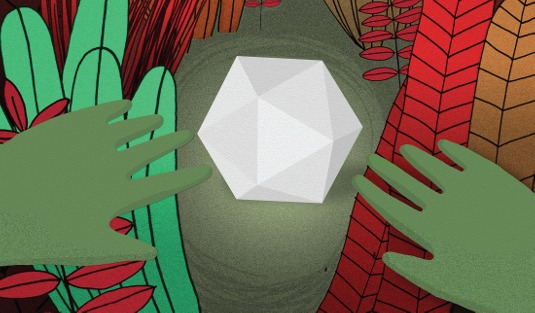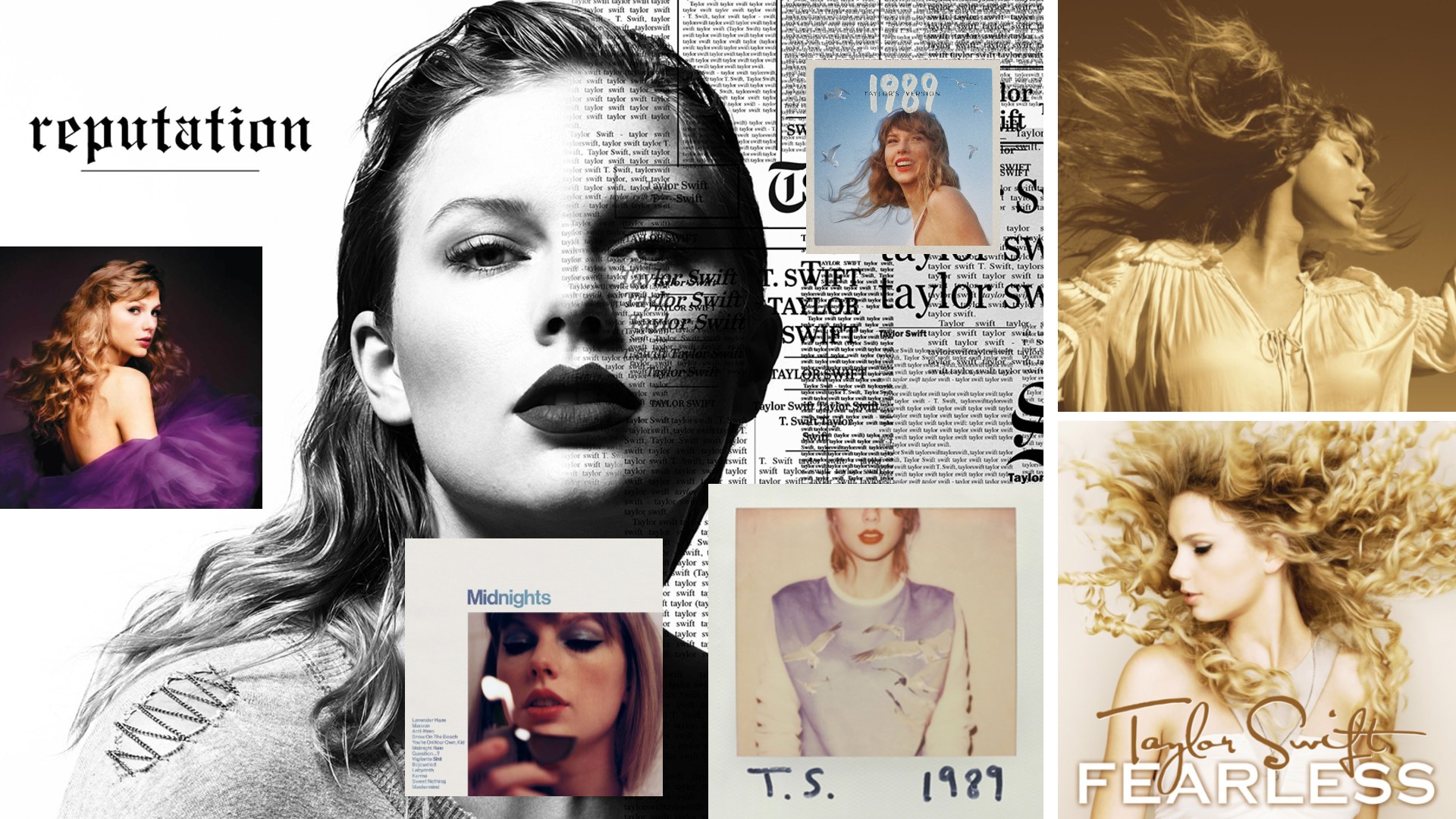How to cope with an open design brief
What is an open brief and how should you approach one? We canvas the views of four leading creatives.

The Merchant City is Glasgow's creative quarter. Its foundations laid by those who prospered in shipping, sugar, tea and tobacco in the 18th century - 'tobacco lords' as they became known - the district is now the city's cultural epicentre. Wide streets and open squares attract visitors all year round. Its nightlife is famous.
The area is also home to Graphical House, a design consultancy that, according to director Daniel Ibbotson, regularly deals with open briefs: "Most projects that come into our studio could be described as open," he begins. "It's rare for a client to approach us with a prescriptive request."
Open-minded
Ibbotson describes Graphical House's studio as "an exhibition space and goldfish bowl". Based in an old shop unit, its façade is lined with large windows that give passers by a unique perspective into studio life - and this open house ethos permeates every aspect of its work.
Founded in 2002, the consultancy has a folio that includes work for the 2014 Commonwealth Games, UK broadcaster Channel 4 and fashion retailer Cruise, its output characterised by intelligent, well-crafted design. "For the most part, our clients have identified a need for something and will come to us to help define the nature of that something, then realise it in whatever form is appropriate," Ibbotson continues. "The pleasure of our job is in the challenges presented by our clients - in that respect, the more open the brief the better."
Ibbotson's view isn't necessarily representative of the industry as a whole. The open brief is a contentious issue: definitions vary, their frequency contended, with some creatives questioning whether or not they exist at all. "There's no such thing as a completely open brief," Andreas Friberg Lundgren says. "The client commissioning us to do work for them always has specific needs - although, at the beginning of the project, they might not always be clear about them.
"For us as designers, these restrictions are necessary. There is nothing as daunting as a blank canvas."
Client frustrations
Lundgren is senior art director and partner at Gothenburg-based design and development bureau Lundgren+Lindqvist. He speaks as the voice of experience - bad experience.
Get the Creative Bloq Newsletter
Daily design news, reviews, how-tos and more, as picked by the editors.
The designer points to an unnamed client who, after emphasising an implicit trust in Lundgren+Lindqvist, proceeded to rebuff its every proposal, each time requesting a more diluted design on the original idea. "In this case," Lundgren says, "I suspect that the openness of the brief led the client to worry about whether or not they were giving us proper instructions, leading them to overcompensate for the vagueness of their initial approach. A lot of friction could easily have been avoided by drafting a clear brief from the outset."
With services covering branding, graphic design, illustration and art direction, Lundgren+Lindqvist is noted for its pared-down aesthetic. "We have a reductive approach," Lundgren says, "which is not to be confused with minimalism." It's a style that lends itself to more structured briefs: "We thrive on limitations and restraints. What others view as a problem, we try to treat as an asset, allowing us to not only face but embrace the harsh reality of budgets and time plans."

Unlocking open briefs
Lundgren's views serve to highlight a discrepancy between disciplines. While rendering a project almost unworkable in one field, an open brief stokes the creative fires in another. It's something the multidisciplinary Sara Blake understands all too well.
"The illustrator and artist in me loves open briefs; the designer in me hates them. Design feels like problem solving - when a brief is completely open, I'm not really sure what I'm even doing. Making art, for me, is all about awe and delight, and an open brief is a dream."
Blake is the New York City-based creative whose work incorporates illustration, fine art, design and art direction. Under the moniker Zso, her impressive and ever-growing client list takes in Nike, Ford and Wired magazine, to name just a few.
"If an open brief comes up for more of a design-led project - a specific product, brand identity - I try and self-enforce a few rules to solve around," Blake says. "If it's more of a fine art piece for a gallery or commission, I can happily just jump into it and it feels wonderfully self-indulgent. I always have a list of things I want to try out, and open briefs can be fantastic opportunities to apply that - when someone has hired you to make something that you already wanted to make on your own."
Honed workflow
This is also true of Format.Ldn's best work. The London-based, multidisciplinary creative studio specialises in graphic and motion design for clients such as Rolls Royce, MTV and the NHS. Creative director David Jackson has honed a workflow he feels gets the most from open briefs, which can be broken down into four key areas.
- Thoroughly researching the client, Jackson says, is the first step - performing an "in-depth analysis of all aspects of the client's current brand in order to give us understanding and insight. Understanding the client is the most important thing."
- Secondly, where possible, it's beneficial to arrange a face-to-face meeting with clients. This fosters trust and offers greater insight into tastes and expectations. Meet in an informal or neutral setting - a studio can intimidate clients, making them less forthcoming about what they really want. "Sometimes," Jackson says, "a client will mention something they have seen or a small detail that can seed our creative path."
- The third stage is all about options. "Clients love options," Jackson says. The key, here, is not to overwhelm. Agree how many concepts can and should be delivered within the contracted pre-production time and agreed budget. This ensures all parties are clear on development time and costs.
- Once the client has chosen a concept, it's time to get to work. This is the fourth and final move. Constant dialogue between you and the client is crucial, to guarantee things are moving in the right direction. "We always make sure that the client is fully engaged during this final process," Jackson says. "It's essential: it is their product after all."
Potential pitfalls
An ostensibly open brief can often be symptomatic of a client lacking in either knowledge or confidence when commissioning creativity. They have something in mind - if only subconsciously - but don't know how to articulate it. It's something Blake's learned to combat.
"It's your job to help them work through that," she says. "It might not be their fault, they just don't always know how to organise their creative thoughts - especially if they are small, independent and not used to collaborating in this way. I try and begin by actually assigning my client a little bit of work before getting started by asking them to pull references for me." Notes and doodles, cuttings and moodboards: any supporting material the client can provide is going to help safeguard the project's success.
But the real key to unlocking a hidden brief is clear and constant communication. "The skill is extracting that information from conversations and meetings," Jackson says, "and guiding the client in the best direction."

An open brief in its purest form is often found in projects of low economical gain - a limited budget compensated by increased or unlimited creative freedom. Charity work, for example. Whatever creative or financial benefits a project promises, it's important to protect yourself against the pitfalls of an open brief. Without clearly defined boundaries, you may find yourself being asked to return to the drawing board one too many times. Jackson stresses the importance of agreeing a structure and comprehensive budget from the outset.
Blake takes this one step further, building a clause in her contract that allows for a maximum of three revisions before charging extra. "You have to value your time and experience," she explains. "I try to avoid this at all costs, though, and troubleshoot in any way possible before backing out of a project. But, sometimes, you just have to bow out gracefully."
Carte blanche is the lifeblood of creativity. While open briefs are becoming scarce, they encourage innovation and should be grabbed with both hands. Whether this requires a client to trust your vision or you to realise theirs, these are the commissions that promise uncharted territory and guarantee original results.
"Open briefs do exist," Blake concludes, "they are just rare. They're also when you make your best work - when you're personally invested in the outcome beyond a pay cheque."
Words: Gary Evans
Liked this? Read these!
- Free graphic design software available to you right now!
- Create a perfect mood board with these pro tips
- The designer's guide to the Golden Ratio
How do you beat the blank page blues? Hit the comments!

Thank you for reading 5 articles this month* Join now for unlimited access
Enjoy your first month for just £1 / $1 / €1
*Read 5 free articles per month without a subscription

Join now for unlimited access
Try first month for just £1 / $1 / €1

The Creative Bloq team is made up of a group of art and design enthusiasts, and has changed and evolved since Creative Bloq began back in 2012. The current website team consists of eight full-time members of staff: Editor Georgia Coggan, Deputy Editor Rosie Hilder, Ecommerce Editor Beren Neale, Senior News Editor Daniel Piper, Editor, Digital Art and 3D Ian Dean, Tech Reviews Editor Erlingur Einarsson, Ecommerce Writer Beth Nicholls and Staff Writer Natalie Fear, as well as a roster of freelancers from around the world. The ImagineFX magazine team also pitch in, ensuring that content from leading digital art publication ImagineFX is represented on Creative Bloq.
